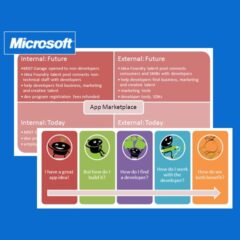Feb19
In my previous post I wrote about the importance of competitive analysis as part of a Search Engine Marketing campaign. This post will discuss tips for keyword management, including targeting, scheduling, negative keywords, and multivariate ads. (In part 3 we’ll discuss analytics and performance tuning, conversion monitoring, and weeding out expensive under-achievers.) Both Google AdWords and Bing enable you to run multiple campaigns, each targeted toward a different purpose, product, or demographic. Each campaign can have its own budget and targeting options, including options for time of day, language, geographic areas, and search publisher networks. The publisher network extends your reach beyond the main Google and Bing search sites, adding sites that also display pay-per-click results relevant to their content and audience. For Google, the search network includes Google sites like Gmail, YouTube, Blogger, and Google Finance; for Bing, it includes sites like Facebook and MSN. The extended networks include many thousands of independent publisher sites, including mobile. Each campaign contains individual ad groups, and ad groups can have multiple ads, in a few formats, with text ads being the most popular and familiar. The targeting options mentioned above can be set at the campaign or ad group level....
Feb17
For most organizations, search drives the bulk of traffic to their web and mobile sites. Even if you have a powerful brand and a loyal following, search traffic can represent 50% of your visitors (your site analytics system, such as Google Analytics, will give you a fairly precise accounting). Even in news sites with high traffic and loyalty, I have noted that up to 90% of the visitors are referral traffic, meaning they came via a link on another site, primarily a search channel, and not from a direct visit to the home page. (This is why I often say “Google is your real home page.”) I have written previously about Search Engine Optimization (SEO), the way to improve your natural ranking in the search engine results, notably on Google and Bing. For many marketers, SEO is the most difficult and the most misunderstood. Countless search agencies make a living by peddling SEO voodoo tactics. But as I discussed in previous posts, the principles are actually fairly simple: the trick is to get the right people involved: content (editorial), marketing, and technology all need to work to make SEO a success. Search Engine Marketing (SEM) , also known as...
Feb13
My 10-year-old daughter has become a blogger! (Kudos go to her teacher; I never thought to introduce her to blogging myself.) No, you won’t find her posts out in the blogosphere; they are safely contained behind EduBlogs.org. But her class is engaged in a unit on blogging, and you can imagine that I’m delighted. One thing that struck me was how many of the kids in her class post videos on their blogs. Video sharing has become an integral part of the digital native’s world, and it’s remarkable how engaged children are with the medium. Hardly a day goes by that Sarah doesn’t show me a video she discovered from someone at school. At this age, kids are also getting more interested in news. I remember being introduced to current events by my 4th grade teacher. Could this be a teaching moment for the news industry? I was looking over the web properties owned by a potential client today, and I noticed that they contained comparatively little video, and that the news agency itself lacked their own YouTube channel. Now, when I was at DNAinfo.com we started with a heavy video element, but we eventually re-balanced the video against...










